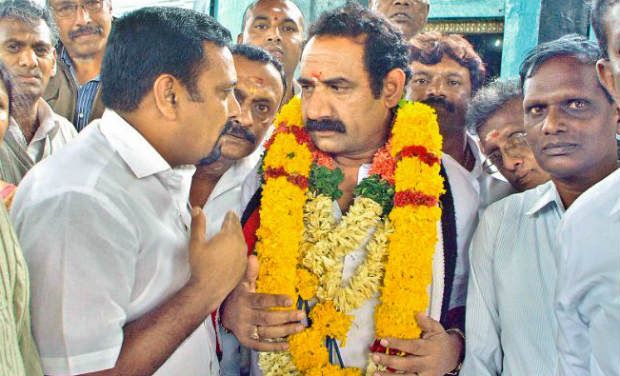Category Archives: Arts, Culture & Entertainment
Kurangani Hills – a pristine spot for trekking
Madurai :
Kurangani Hills near Bodinayakanur in Theni district is a perfect place for trekking fans as well as nature enthus. The 12 km walk from Kurangani village to Top Station through Central village is a journey to be cherished. Those who visit Munnar in Kerala can also enter the trekking route here by walking down the dense woods and plain grasslands of Kurangani Hills. By reaching Top Station, border of Theni district, from Munnar after 35 km travel, one can start trekking down the hills.
Although, Kurangani Hills is near the famous Munnar Hills and Kolukkumalai Hills — the highest hills for tea plantation in the world at an altitude close to 8,000 feet — the place is still not known in the tourism circuit. However, several foreign tourists do come here. Some nature lovers within the state also frequently visit Kurangani Hills. Film-makers too have been charmed by the nature here. Films Alagar Samiyin Kuthurai, Myna and Kumki were shot on the Hills. The best months to explore the Hills are between August to December.
Frequently changing weather, low-hanging clouds, chilly atmosphere and strong winds coupled with wide range of flora and fauna are the things to enjoy in the hills. It takes four to five hours to complete the trekking from Kurangani village, the foothills of the Hills to reach Top station, whereas two-and-a-half hours is enough for the return trip. Trekkers can find Samabalaru falls, the source of Kottakudi river which serves the drinking water needs of Bodinayakanur town, while wading through here. Central Village, with a population of 200 people and 50 houses, is four more kilometres from the Falls. A couple of cottages are available in here to provide accommodation for the visitors. Foreigners, who come prepared with tents, prefer to stay under the open sky. Guides can take you through unexplored thick woods.
The villagers say that tourists frequently spot Indian guars, barking deer, langurs, wild cats and. However, the villagers warn about the presence of leopards and tigers.
REACHING THERE
* Bodinayakanur is 16 km away from Theni, connected by frequent bus service
* 15 km road connecting Kurangani and Bodinayakanur
* Via Munnar one can reach 100 km distance Road facility connecting Bodinayakanur and Top Station- Around
* Buses, jeeps and autos available from Bodinayakanur
* 12 km — trekking distance between Kurangani village and Top Station
* Central village is the half-way point between Kurangani village and Top Station
* Best time to visit: August and December
* Lodges available in Top Station, Bodinayakanur and Munnar. Only two cottages available in Central Village
source: http://www.articles.timesofindia.indiatimes.com / The Times of India / Home> City> Madurai> Nature / by V. Devanathan, TNN / June 10th, 2013
India’s glittering jewellery, now at Poompuhar
India’s diverse artistic culture has now converged in one place, bringing the city the finest exquisite jewel works from the artisans of various states of this country at the Poompuhar – Artistic and Artificial jewel exhibition that was inaugurated here on Wednesday.
Like every year, the exhibition is slowly starting to make its mark by grabbing attention of the crowd, especially the ladies, who have been flocking to the exhibition since its inauguration. ‘We eagerly expect this exhibition every year as they have a huge collection,’ says Jayalakshmi, who had come along with her friend to purchase ornaments.
The exhibition has an assortment of every state’s artistic work to enchant the buyers of various age groups. From Impon jewellery, temple ornaments and antique jewellery to Jaipur’s stone jewellery, Hyderabad’s pearls and gold plated ornaments, the bling is fast disappearing. In addition, wooden jewels, tribal jewellery, jute-made ornaments, silver filigree, crystal chains, Rajasthani bangles and meenakari earrings seem to be the popular choices for the younger generation.
Just few days into the fair, the exhibition has already seen phenomenal sales with products worth between `50,000 – 60,000 being sold each day. And it is expected to increase in the days to come.
But it is not only the local crowd that is grabbing the bling – the exhibition has also caught the eye of foreigners. According to the Bose, manager trainee, Chennai’s foreigners are a huge fan of the jewellery. “They love the variety here, they feel the jewellery is very colorful and unique,” says Bose. This can be very well seen from the sight of a foreign visitor who carefully scans through all the stalls. ‘I totally love this place. I am seeing every variety that I can think of,’ says Ken Smith, a visitor from Canada.
The artisans from different places find this as a perfect platform to exhibit their works to people.
Sometimes they get huge orders after displaying their products here, while others feel quite disappointed to see people hesitating to buy original quality crystals and stones, instead opting for duplicate low quality crystals outside.
This is inspite of the huge profit margin they gain.
But the buzz is still on and the excitement is sure to go on for few more weeks, as the exhibition ends only on June 29. After all, there is no end for shopping in a city like Chennai.
source: http://www.newindianexpress.com / The New Indian Express / Home> Cities> Chennai / by Express News Service – Chennai / June 08th, 2013
Leader who shaped Tamil Nadu politics turns 90
Chennai :
As a 14-year-old during the anti-Hindi agitation, he walked alongside Periyar as E V Ramasamy was called, with a spring in his step and vigour in his heart. Breaking away from a traditional family of temple musicians, he made politics his domain.
His fledgling party formed as a breakaway faction from the original DK in 1949, soon went on to shape national politics in the post-emergency era. Today, 10 years short of his centenary, Muthuvel Karunanidhi is the oldest surviving active political leader of stature hi n the country with lakhs of party functionaries under his command for the past 44 years. Only his party general secretary K Anbazhagan is older than him. Karunanidhi enters his 90th year on Monday.
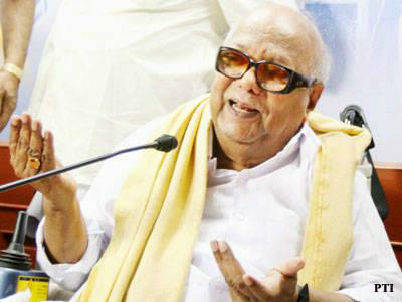
Facing a succession war, 2G scam charges and political isolation after the recent pullout from the UPA II regime, the DMK veteran is still a fighter strategizing at party conclaves. A five-time chief minister of Tamil Nadu taking over the reins of CM at a relatively young age of 44 years succeeding C N Annadurai, and 12- time MLA, Karunanidhi has been meeting party cadres and writing for them in the party organ almost every day.
Karunanidhi is the first Dravidian leader to set his sight on national politics, say analysts. “Till his mentor Anna’s period, the DMK had focussed on state politics. But Karunanidhi adopted a different strategy. He has been concentrating on national politics since 1971. He was planning to get more projects and funds for the state with the support of the Centre. Though, there was a strong anti-Congress mood in the party, he aligned with the Indira Gandhi-led Congress in the 1971 Lok Sabha elections,” Dravidian writer and historian ‘Sangoli’ K Thirunavukkarasu told TOI.
The DMK was the first party to pass a strong resolution against the Emergency. The Karunanidhi-led government was dissolved in 1976 following the Emergency. “He played a vital role in the formation of the National Front in 1988. He had organised a big event for the National Front and leaders like V P Singh, N T Rama Rao and others participated. DMK became a constituent of the Union government for the first time when V P Singh formed the government in 1989. The DMK has had a strong hold at the Centre for the past 15 years with its representatives a part of the Centre,” he said.
Commentators say that Karunanidhi never gave up his basic ideologies like justice and the interest of Tamil language. “Karunanidhi has been following his ideologies from the time of the Justice Party,” Thirunavukkarasu said.
Though Karunanidhi dropped out of schools unlike his colleagues in the party, R Nedunchezhian and EVK Sampath, he managed to succeed Anna. “Others acted like leaders. But, Karunanidhi acted as a party worker. When he was a treasurer of the party during the Anna years, he had travelled across the state and consolidated his support base,” party seniors recalled.
Karunanidhi not only attracted the cadres but also impressed his mentors Anna and Periyar. “The other leaders in the party only knew about me, but Karunanidhi was the only one who knew the real me,” Anna once said. In fact, it was Periyar who proposed Karunanidhi’s name for DMK’s top post.
Political observers say that Karunanidhi’s hard work is the key factor for his consistent success. “He is still reacting to all the important issues. He has been writing letters and statements on a daily basis. Once he had said he would feel bad if he was not writing anything on any given day,” writer and politician D Ravikumar said. The Karunanidhi government had initiated many schemes and projects for the marginalised people like beggars, transgenders and the disabled.
The big challenge for the patriarch is to regain power in the state and and his ‘World Tamil Leader’ title. “Pulling out from the UPA government after enjoying nine years of power at the Centre, DMK has no allies now except the VCK. With not in power in the state, the party has been facing a serious crisis,” said a senior leader.
But, they are confident that their leader can come back to power with his commitment. “We were not in power for 13 years during the MGR period. We got only two seats in the 1991 assembly elections in the wake of Rajiv Gandhi’s assassination. But we bounced back with Kalaignar’s efforts and strategies,” said another leader.
source: http://www.articles.timesofindia.indiatimes.com / The Times of India / Home> India / by Karthick S, TNN / June 03rd, 2013
Angkor Wat Built by Descendant of Raja Raja Cholan
Angkor Wat is a temple complex at Angkor, Cambodia, built by King Suryavarman II in the early 12th century as his state temple and capital city. As the best-preserved temple at the site, it is the only one to have remained a significant religious centre since its foundation — first Hindu, dedicated to the god Vishnu, then Buddhist. The temple is at the top of the high classical style of Khmer architecture.
Angkor Wat combines two basic plans of Khmer temple architecture: the temple mountain and the later galleried temple, based on early South Indian Hindu architecture, with key features such as the Jagati. It is designed to represent Mount Meru, home of the devas in Hindu mythology: within a moat and an outer wall 3.6 kilometres (2.2 mi) long are three rectangular galleries, each raised above the next. At the centre of the temple stands a quincunx of towers.
The initial design and construction of the temple took place in the first half of the 12th century, during the reign of Suryavarman II (ruled 1113 — c. 1150). Dedicated to Vishnu, it was built as the king’s state temple and capital city. In the late 13th century, Angkor Wat gradually moved from Hindu to Theravada Buddhist use, which continues to the present day.
source: http://www.phannarith.com / Home / May 31st, 2013
Enjoying the best of both worlds
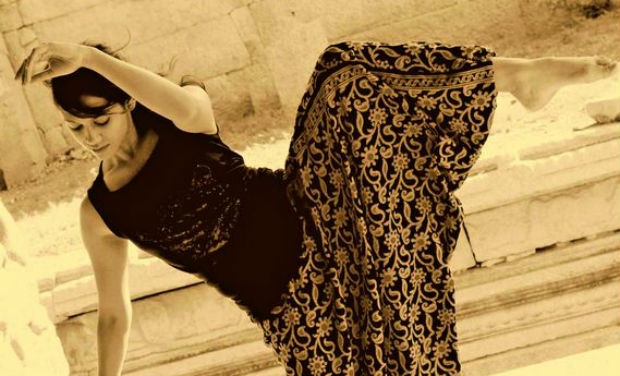
She’s been one of the bright spots this Margazhi season, her graceful exuberance lighting up the stage, perhaps a mark of her tutelage under Priyadarshini Govind. Currently based in Chennai, Shweta Prachande has performed all over India and represented the country at several international festivals.
Madras Miscellany : When the postman knocked ….
When the postman knocked…
*Referring to my piece on Dr. S. Gopal, that outstanding modern Indian historian (Miscellany, April 22), V.C. Srikumar, an advocate, tells me that Gopal could have been an equally outstanding advocate if only he had chosen the Law as a profession. Gopal took his Law degree from the University of Madras in 1944. The previous year, he was awarded the University Gold Medal for Constitutional Law. But instead of following the example of two of his brothers-in-law, Kasturi Seshagiri Rao and M. Seshachalapathy of the Madras Bar — the latter went on to become a Judge of the Andhra Pradesh High Court — he chose to go to Oxford to improve on his Master’s in History which he had obtained in Madras. The Law’s loss was History’s gain thereafter.
*P. Krishnan, who on a recent visit to the Marina caught up with the Tilak Ghat memorial that was installed after years of appeal, tells me that it’s yet another forgotten landmark in the city: “no one pays any attention to it”. But, he continues, the authorities constantly keep speaking of new plans for the Marina. And there are also now plans for the San Thomé beach, he adds. Perhaps they’d like to add markers at both sites to a historic event — and find them as ignored by the public as the event itself has been forgotten. The event he refers to is the Madras Salt Satyagraha in 1930, following on the heels of the Dandi and Vedaranyam marches. The march to the sea at the Triplicane Beach (later called Tilak Ghat) was led by T. Prakasam, S. Satyamurti and others. At San Thomé Beach, many from the film world were in the forefront. As usual, my correspondent adds, arrests were made followed by releases after brief detentions. And that was that.
*My New South Wales correspondent, Dr. A. Raman, sends me yet another tidbit and I wonder whether the Meteorological Department will have anything to add to these bits of information relating to a Dr. Alexander Turnbull Christie, who was an Assistant Surgeon in the Madras medical establishment until 1828 and who wrote a treatise on “Epidemic Cholera”. When he returned to Scotland on furlough that year, he got interested in Geology and Meteorology and got down to studying them. This academic pursuit of his led to Christie being appointed Geological Surveyor, Government of Madras, in 1830. When he returned to Madras in 1831, he brought with him several meteorological instruments bought from “Robinson, Optician, Portland Place” (London or Edinburgh?). These included a thermometer, a barometer, an oethrioscope, a photometer, an electroscope, a hygrometer, an ombrometer (rain gauge) and an atmometer. Fort St. George thereupon ordered 20-30 sets of this equipment for the Presidency. Dr. Raman, in a footnote adds that “it is interesting to note that Christie speaks highly of (in the Madras Journal of Literature and Science) Centigrade measurements of temperature as against Fahrenheit readings even as early as 1832, when Fahrenheit measurements were followed religiously in the U.K.!”
source: http://www.thehindu.com / The Hindu / Home> News> Cities> Chennai> Columns / Madras Miscellany / by S. Muthiah / June 02nd, 2013
I am… C.S. Balachandra Raju – Photo studio owner
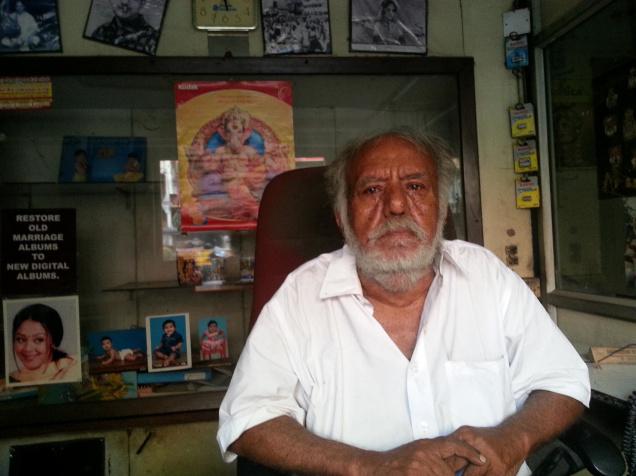
Today, everybody is a photographer, and everybody owns a camera. If you go to a function, there are so many cameras
C.S.Balachandra Raju’s ‘Sathyam studio’ in Mylapore is like a curiosity shop. Young Cho Ramaswamy and Hema Malini smile from photographs taken decades ago; cameras that the 75-year-old used as a young boy line the back-room; and he still has a copy of the letter-head from 1940’s, bearing the street name ‘Brodies Road’, long before it became R.K.Mutt Road. “The photo studio was started by my father. It moved to this location — from North Mada street — in the 40’s, and I took over in 1961. Back then, portraits were very popular; judges, cine actors, doctors — all of them came. But now, everybody walks in for passport photos.”
Mylapore, in the 60’s, was filled with coconut trees. “There were trams that came to Luz Corner; I used to board one to go to Santhome, the fare was just six paise! And long before Mada streets became crowded, there was a provision for fire-engines to fill water from the temple tank.” In that black-and-white era of photography, Raju recalls taking pictures of women who came to the studio with flowers stitched into their plaits; infants were carried-in by their parents, to have their first portraits shot, with their hands and knees on a table. “And even now, people come and say they want photographs of their child in the same way.” The only difference is, it used to take two days then, to develop the negatives, and cost a mere Rs.3 for set of passport prints…
The cameras back then were heavy; Raju and his son Anand show me their old ones, imported from Germany. “You had to specially eat just to carry that one around,” Raju laughs, pointing to a square, handmade wooden camera, over a foot wide. Photography then, was truly an art, and the photographer’s skill and judgement produced good images.
Raju then moves on to the present. “This property belongs to the temple,” he says, pointing to the Kapaleeshwara temple gopuram diagonally across. “But the rents have increased sharply, it is getting unaffordable”. Besides, competition is very stiff, he says. “Today, everybody is a photographer, and everybody owns a camera. If you go to a function, there are so many cameras. See, you’re also taking pictures with your cell-phone!” and I smile as I shoot his pictures.
Our leisurely conversation is interrupted, when a man walks in and asks if he can get some papers photocopied; Raju’s son directs the man to the right shop. “My son is now the backbone of the shop, he is my successor,” Raju says, adding that the future, as he sees it, is digital. “We have to change with times,” he says pragmatically. As if to underline that, a signboard behind him offers to “restore old marriage albums to new digital albums”. Raju has also moved out of Mylapore, and now lives in OMR, but he misses the traditional neighbourhood. We’re interrupted yet again; this time, it is two boys whose cricket ball has fallen into the compound. “They live next door; earlier, their parents played cricket and came looking for balls; now it is their turn. We would like to continue our business here for longer, but for that, Kapaleeshwara must help”.
(A weekly column on men and women who make Chennai what it is)
source: http://www.thehindu.com / The Hindu / Home> Features> MetroPlus> Society / by Aparna Karthikeyan / June 09th, 2013
Amma Unavagam workers get hospitality tips
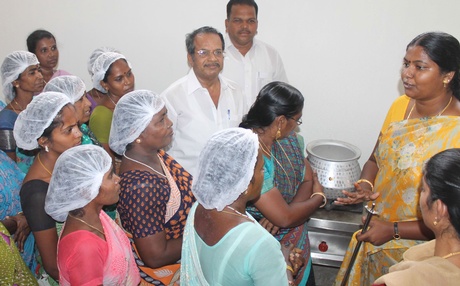
Women attached to a Self-Help Group cooked food on a trial basis at two centres identified for ‘Amma Unavagam’, on Thursday.
As many as 120 women belonging to 10 self-help groups would be involved at the 10 low budget canteens across the city. Mayor P Karthiyayini said the women had prior experience in running canteens and hotels on a small scale. They were taken to ‘Amma Unavagam’ canteens in Chennai and given training on how to behave with customers and serve the public.
The women were also trained in cooking in large quantities in Vellore last week, she said and added that the government had already specified the quantity of ingredients that needed to be used for preparing food for 300 to 500 persons.
On Thursday, officials attached to the Corporation visited the two canteens at Neduntheru in Kasba and Gandhi Nagar in Katpadi, where sambar and curd rice were cooked. The cost estimation for preparing food by 10 canteens for a year was arrived at Rs 2.70 crore and the revenue was estimated at Rs 1.31 crore. The deficit amount of Rs 1.39 crore would be met from the General Fund of the Vellore Corporation. A resolution in this connection was passed at the Corporation council meeting held on Thursday. Vessels for the canteens were also purchased at a cost of Rs 14.40 lakh. Karthiyayini said the dates for the inauguration of the canteens would be announced soon.
source: http://www.newindianexpress.com / The New Indian Express / Home> States> Tamil Nadu / by Express News Service – Vellore / May 31st, 2013
On 150 years of archaeological finds at Egmore Museum
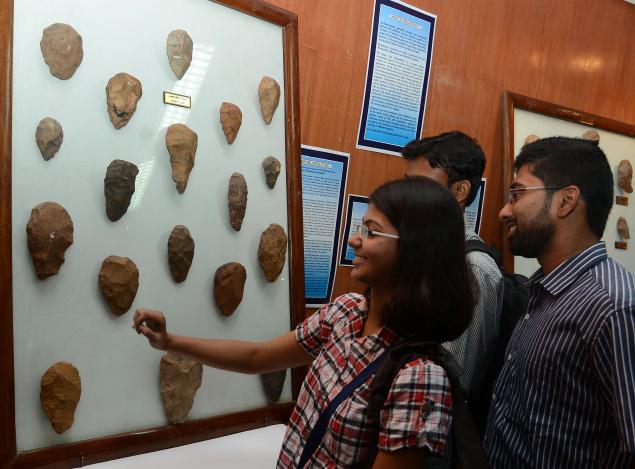
At the centre of the centenary exhibition hall at the Government Museum in Egmore, lie two closely-guarded Palaeolithic tools — one a hand axe from Pallavaram and another, a cleaver from Attirampakkam.
On May 30, 1863, exactly 150 years ago, renowned geologist Robert Bruce Foote picked up the hand axe from the “debris on the Brigade Ground at Pallavaram near Madras”.
The museum, in collaboration with Sharma Centre for Heritage Education is commemorating the momentous discovery by organising a special exhibition of Foote’s collection of stone tools. R.B. Foote sold the tools to the museum in 1904 for Rs. 40,000, said R. Kannan, secretary, tourism, culture and religious endowments department.
Over 75 tools have been put on display, said, anthropology gallery curator, Thulasi Brinda. “They are from places such as Mysore and Baroda among others. This is also the first time we have displayed a painting of Robert Bruce Foote,” she said.
M.L.K. Murty, Tagore National Fellow, Archaeological Survey of India, who delivered the first Robert Bruce Foote Memorial Lecture on the occasion, spoke about how Foote, who was a geologist at Madras Presidency, was inspired by the recognition given to stone tools discovered in Europe, to make his findings.
Shanti Pappu, founder secretary and Kumar Akhilesh, director-projects of the Sharma Centre, have been studying the prehistoric site of Attirampakkam, one of the sites discovered by Foote, since 1999. Dr. Akhilesh said they had conducted excavations until 2005, and have been studying the stone tools since then.
Ms. Pappu, said that while a lot of emphasis was given to sculptures and monuments in the country, there was not much interest in stone tools. “We want to cultivate fresh interest in stone tools, which are extremely important,” she said.
She said villagers of these sites were the true custodians of this heritage.
“When we are not present, they guard the site and have enormous knowledge about the past environment,” she said. Citing funding and manpower shortage as the two key challenges in the country, she said though the government is supportive in terms of granting licences and permits, there is also a need for public-private partnerships. “If you look at countries such as Israel, every five kilometres someone is working on a pre-historic site. We need that kind of initiative in India.”
While the museum is conducting a one-month course on caring for museum objects, the Sharma centre is marking this 150 year by holding a five-day workshop on Robert Bruce Foote.
Vaigai Chelvan, minister for school education, sports and youth welfare inaugurated the exhibition, which covers pre-historic cultures, the environment they lived in, methods used in the excavation and the significance of the discoveries, among other topics. The exhibition will be on until June 5.
source: http://www.thehindu.com / The Hindu / Home> News> Cities> Chennai / by Staff Reporter / Chennai – May 31st, 2013
